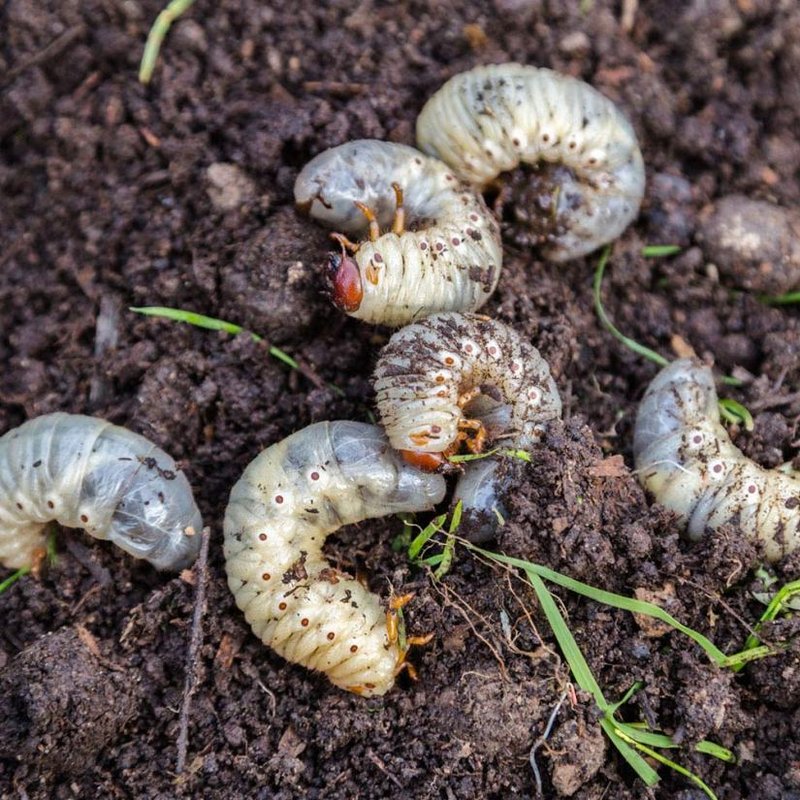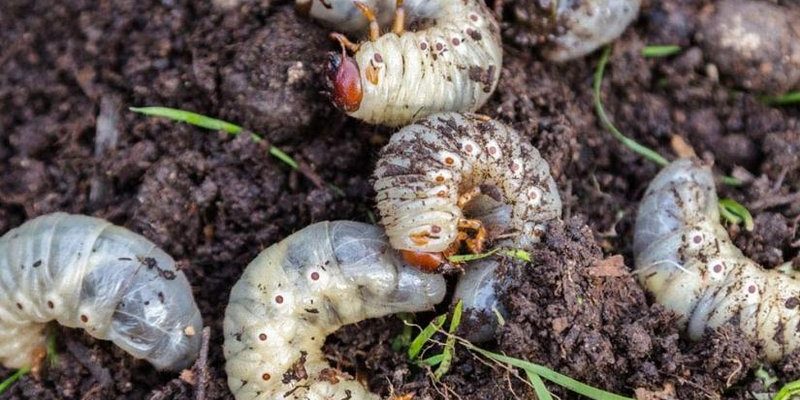
Just like every living thing, grubs respond to their environment. During a drought, when moisture is scarce, the ground becomes hard and less hospitable. This doesn’t just affect the plants above—it also impacts the grub worms that rely on moist soil to thrive. So, if you’ve noticed fewer grubs in your garden or different behavior from them, it’s not just your imagination. We’ll explore how drought conditions shape grub worm activity, and why understanding this can help you better manage your garden.
What Are Grub Worms?
Grub worms are the larvae stage of various beetle species, such as Japanese beetles and June bugs. These little guys may be just a few inches long, but they can cause a lot of trouble in gardens and lawns. Grubs feed on the roots of grass and other plants, leading to brown patches and even dead grass. Knowing what they are is the first step in understanding how drought affects them.
You might be wondering how to identify these critters. Typically, grub worms are white to cream in color and have a soft, C-shaped appearance. If you dig a little in your garden and spot them, that’s a sure sign that grubs are around. But what happens to them when the rain stops? The answer is fascinating and crucial for anyone trying to keep their garden healthy.
How Drought Affects Grub Worm Lifecycle
Grub worms usually thrive in moist soil. They enjoy damp environments where they can feed on roots and grow. However, during a drought, the soil becomes dry and compact. This change can disrupt their lifecycle significantly. In short, grubs might struggle to get enough moisture and food, affecting their growth and survival.
You might notice fewer grubs in your garden during periods of drought. With less moisture and food available, some may even die off. This can seem like a blessing for gardeners battling these pests, but it’s a double-edged sword. Fewer grubs mean less competition for resources, which can lead to a surge in population once the rains return. It’s a bit like a rollercoaster for garden pests!
Signs of Grub Activity During Drought
Even during a drought, grub worms can still be active, but their activity level might change. You might not see them munching away as usual, but that doesn’t mean they’ve disappeared. Instead, they may burrow deeper into the soil to escape the heat and dryness.
Here are some signs that grubs are still around, even when conditions are tough:
- Patchy Grass: If you notice brown patches in your lawn, it could be due to grubs feeding on the roots.
- Bird Activity: Watch for birds pecking at your lawn; they might be searching for those tasty grubs!
- Bare Spots: Areas of your garden may become bare as grubs damage the roots of your plants.
Basically, keep an eye out! Just because conditions are dry doesn’t mean grubs won’t be causing mischief beneath the surface.
Managing Grubs During Drought Conditions
If you find yourself facing an active grub population during a drought, you may want to consider some management strategies. While it might be tempting to take drastic action, let’s explore some gentle yet effective options to control grubs without disrupting your garden ecosystem.
1. **Watering Wisely:** Even in a drought, providing some moisture to your soil can help keep grubs at bay. Deep watering your garden promotes healthy plants, which can withstand some root damage.
2. **Natural Predators:** Encourage birds and beneficial insects in your garden. These natural predators love to snack on grubs, keeping their numbers down effectively.
3. **Healthy Soil Practices:** Focusing on soil health can help your plants compete with grubs. Adding organic matter like compost can improve moisture retention and give your plants the nutrients they need to thrive.
By using these methods, you can responsibly manage your grub problem while maintaining a healthy garden.
Long-term Effects of Drought on Grub Populations
Drought conditions can have lasting effects on the grub population in your garden. When droughts occur, they can lead to a decline in grub numbers initially, but once the rain returns, grubs may rebound quickly!
Here’s the thing to keep in mind: a smaller grub population during a drought might encourage a growth spurt later on. This means that while you may enjoy a break from their damage now, it could lead to a larger problem down the road. Understanding these cycles can help you prepare for future gardening seasons.
Also, different beetle species react differently to drought conditions. Some may adapt and thrive, while others may see significant decline. This variability can change your approach to pest management from season to season.
In summary, grub worms are fascinating little creatures that play a bigger role in your garden than you might realize. Understanding how drought conditions affect their activity can help you take proactive measures to manage their populations. Whether it’s through adjusting your watering practices or promoting natural predators, you have tools at your disposal to keep your garden healthy.
So next time the weather turns dry, remember that the ground is a bustling community of living things. Grub worms, though sometimes a nuisance, are part of that ecosystem. By keeping an eye on them and understanding their behavior, you can ensure your garden remains vibrant, even during challenging times. Happy gardening!

